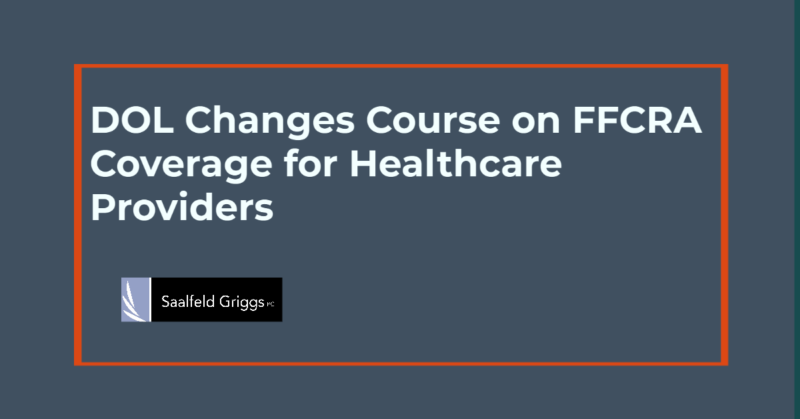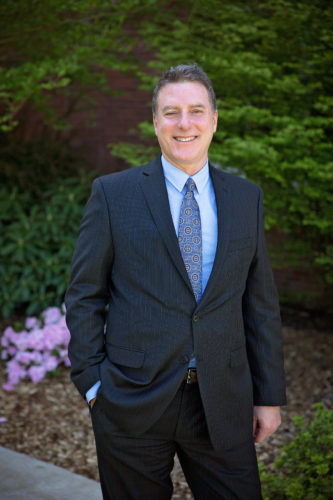
By Randall Sutton, Partner – Employment Law & Litigation Practice Group
Back when the FFCRA was first signed into law, we reviewed the statute and were fairly certain that only physicians and direct care providers would be exempt from the FFCRA. Then the DOL issued its FAQs which provided that all employees of a health care provider were exempt whether or not they provided direct care. In other words, the DOL treated the term “health care provider” to refer to the employer/clinic. The interpretation meant that most healthcare employers were exempt from the FFCRA and could elect to opt into all, part, or none of the law as they saw fit.
A recent New York federal court case read the law consistently with our original interpretation. It found that the DOL interpretation was invalid and that “health care provider” in the FFCRA refers to individuals who provide direct care. As a result, the DOL reconsidered its regulations. On Friday, it issued revised regulations, which are effective today, September 16, 2020.
The DOL FFCRA FAQ has been updated to reflect the new rule. To find it, click here.
- Who is a “health care provider” who may be excluded by their employer from paid sick leave and/or expanded family and medical leave? [Updated to reflect the Department’s revised regulations which are effective as of the date of publication in the Federal Register.]
For the purposes of defining the set of employees who may be excluded from taking paid sick leave or expanded family and medical leave by their employer under the FFCRA, a health care provider includes two groups.
This first group is anyone who is a licensed doctor of medicine, nurse practitioner, or other health care provider permitted to issue a certification for purposes of the FMLA.
The second group is any other person who is employed to provide diagnostic services, preventive services, treatment services, or other services that are integrated with and necessary to the provision of patient care and, if not provided, would adversely impact patient care. This group includes employees who provide direct diagnostic, preventive, treatment, or other patient care services, such as nurses, nurse assistants, and medical technicians. It also includes employees who directly assist or are supervised by a direct provider of diagnostic, preventive, treatment, or other patient care services. Finally, employees who do not provide direct health care services to a patient but are otherwise integrated into and necessary to the provision of those services—for example, a laboratory technician who processes medical test results to aid in the diagnosis and treatment of a health condition—are health care providers.
A person is not a health care provider merely because his or her employer provides health care services or because he or she provides a service that affects the provision of health care services. For example, IT professionals, building maintenance staff, human resources personnel, cooks, food services workers, records managers, consultants, and billers are not health care providers, even if they work at a hospital of a similar health care facility.
To minimize the spread of the virus associated with COVID-19, the Department encourages employers to be judicious when using this definition to exempt health care providers from the provisions of the FFCRA. For example, an employer may decide to exempt these employees from leave for caring for a family member, but choose to provide them paid sick leave in the case of their own COVID-19 illness.
The effect of this rule is that your staff who do not fit within one of the two groups listed above such an HR staff and billers are eligible for paid leave benefits under the FFCRA. That means they are eligible for 80 hours of Emergency Paid Sick Leave (EPSL) and up to 10 additional weeks of paid Extended Family Leave (E-FMLA) arising from the intermittent or reoccurring unavailability of the childcare provider or closure of the child’s place of care.
In Oregon, the E-FMLA is treated as OFLA sick child leave. For employers who were subject to OFLA prior to April 1, 2020, the leave is only available to the extent the employee has not used up their bank of sick child leave. The E-FMLA can be used for many types of daycare provider closures, including the closure of schools, daycare facilities, preschools, before and after school care programs, homes, summer camps, etc. It can also be used when the care provider is unavailable due to COVID reasons. The definition of care provider includes licensed daycare providers, nannies, babysitters, and family members (whether paid or unpaid) who provide childcare. The leave can be taken intermittently, including on an altered or reduced work schedule. For example, the leave can be taken to accommodate K-12 remote learning.
The verification requirements are fairly basic. Verification may include:
- The name of the child being cared for;
- The name of the school or childcare provider that has closed or become unavailable;
- A statement from the employee that no other family member of the child is willing and able to care for the child; and
- In the case of a child older than 14, a statement that special circumstances exist requiring the employee to provide care to the child during daylight hours.
If you have questions regarding the DOL’s new interpretation or about FFCRA compliance issues generally, contact Randall Sutton at our office. rsutton@sglaw.com. 503.399.1070.
Randall Sutton is a partner in the Employment Law and Litigation practice groups. Randy is also a member of the Health and Wine & Vine industry groups. The information in this article is not intended to provide legal advice. For professional consultation, please contact Randy at rsutton@sglaw.com at Saalfeld Griggs PC. 503.399.1070. © 2020 Saalfeld Griggs PC
